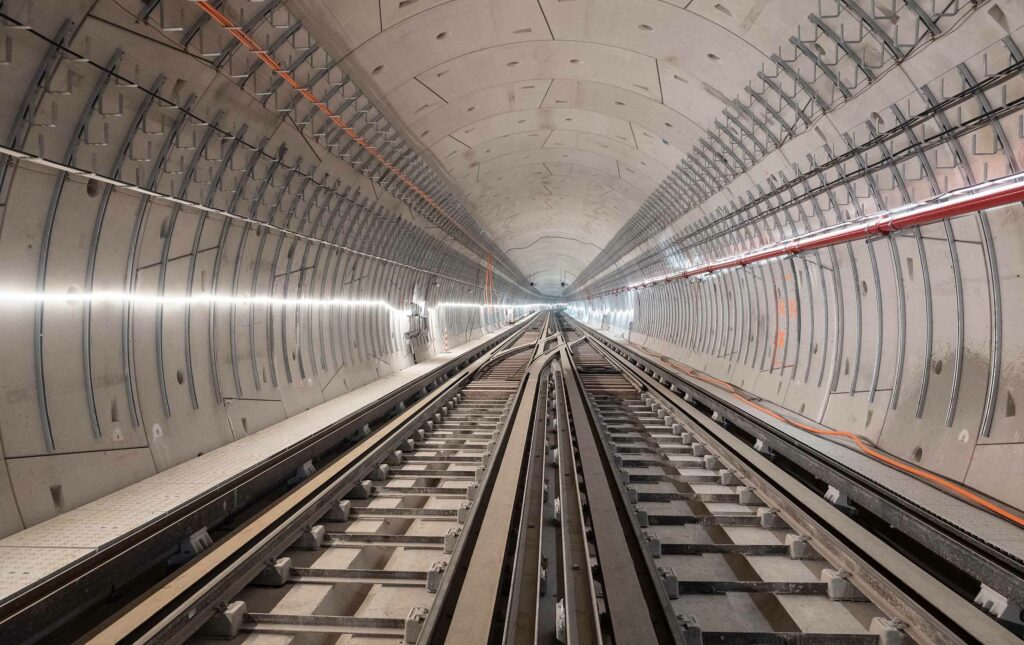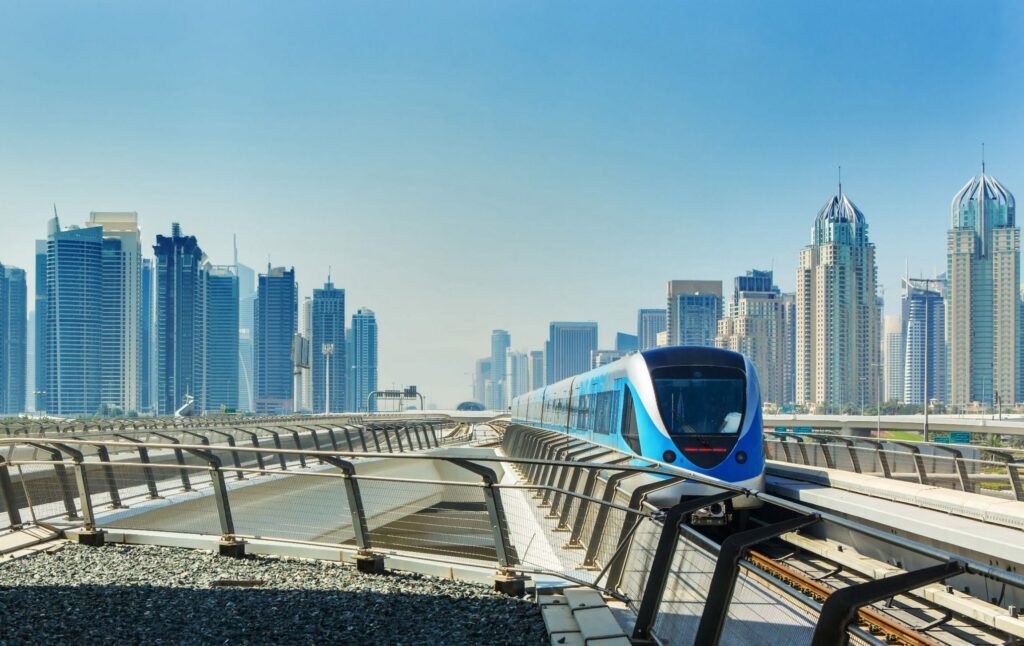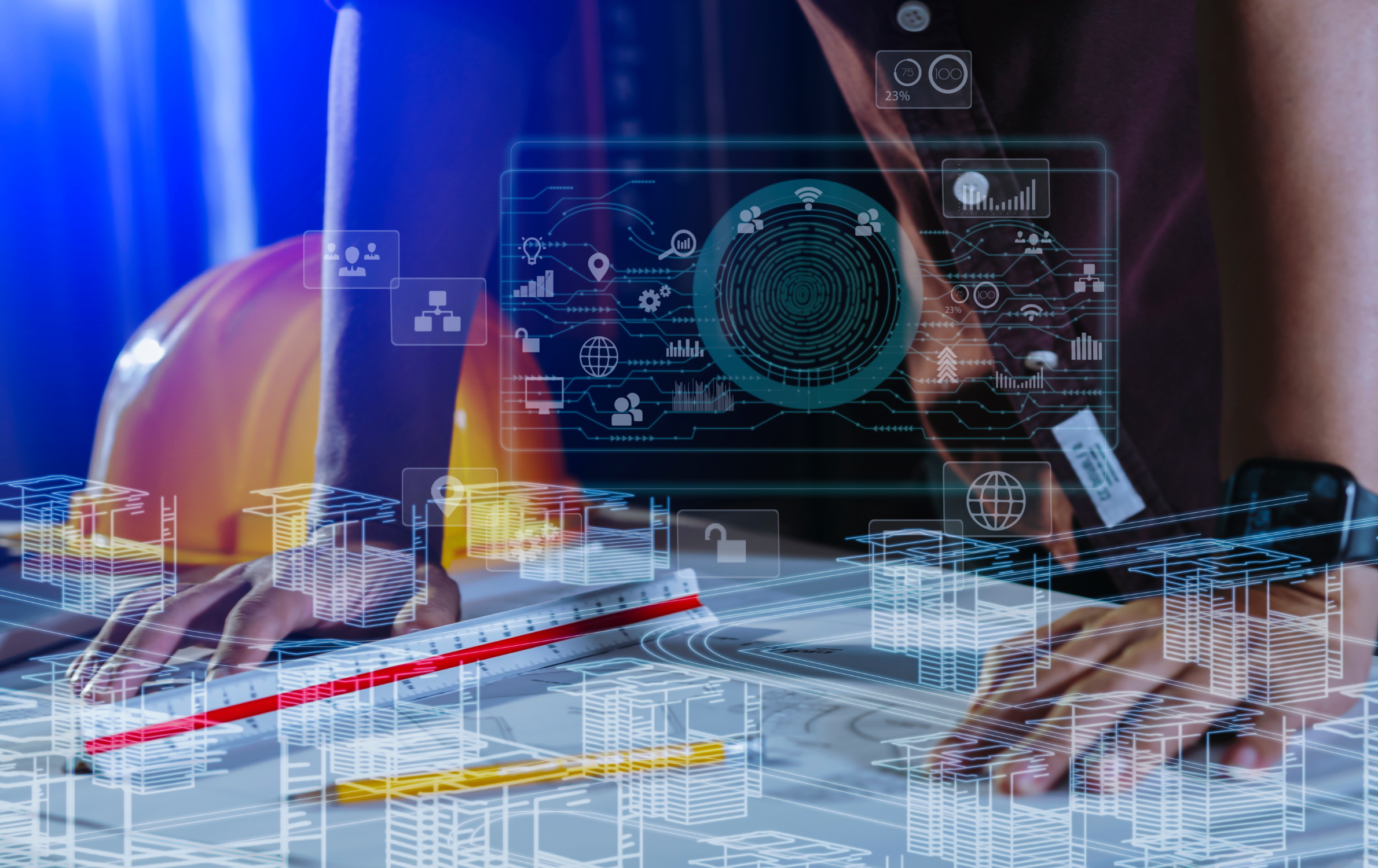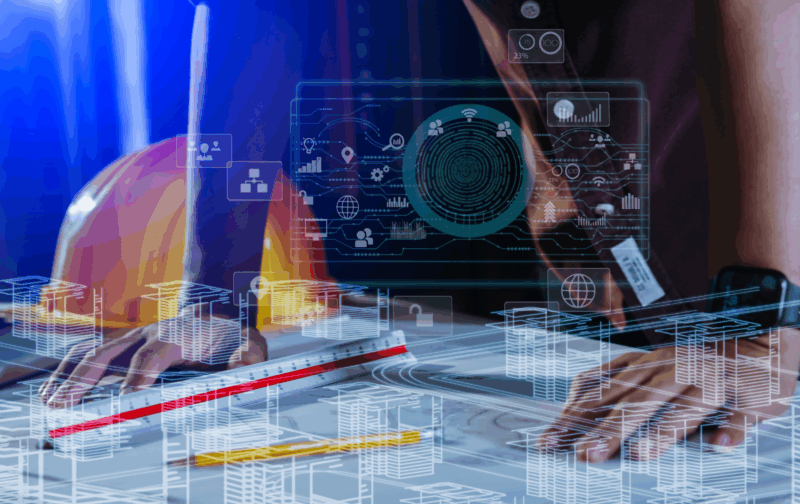There are number of reasons why many organisations are rapidly adopting the use of Artificial Intelligence (AI). One issue rising to prominence is a fear of becoming irrelevant. Falling behind could translate to loss of market share, less market recognition and lower positioning, leading to a potentially worst case – the business ceasing to operate.
Others may get involved from a positive perspective, ultimately recognising the benefits AI brings to the marketplace. However, it can be difficult to determine which category an organisation falls into.
Within construction, AI has been shown to improve the performance of those willing to embrace the technology – helping to drive up productivity and improve the efficiency of processes. But what does construction look like in a future where AI becomes the unavoidable norm?
AI-enabled construction benefits
AI can be described as machines having the ability to self-learn, reason, decide and communicate at a faster rate than humans. While the term ‘Artificial Intelligence’ or ‘AI’ has been in use since 1956, through the work of John McCarthy, OpenAI’s ChatGPT brought the term to wider public attention. It created a cultural zeitgeist when it launched in 2022.

Beyond ChatGPT, engineering firms have been embedding machine learning into construction logistics, transport modelling, digital twins, flood resilience and asset management. Asset owner clients, such as Network Rail and National Highways, are focused on developing a data-first strategy as the foundation for their AI adoption process.
But are our AI tools merely reflecting our current processes? What do we need to do to ensure the tools are helping sectors move to a more optimal operational process?
Generative AI that uses Large Language Models (LLMs), such as ChatGPT, have been designed to learn from existing material created by humans, with a view of then creating response to user prompts. It’s argued these responses are not ‘new’. They do not ‘think outside the box’ or challenge preordained thinking. The outputs are simply repackaging what it has learnt from a curated database.
While the construction phase of a project generates large amounts of data, it forms only part of the larger infrastructure asset lifecycle. Data is generated throughout the asset lifecycle and there are benefits in ensuring the “golden thread” approach begins with the business case development. (The golden thread is an outcome of the Dame Judith Hackitt review of the Grenfell Tower tragedy as recommendation to the construction industry). AI can then better process the data generated and convert information into actionable insights for the asset operators.
The construction sector requires a shift in thinking and needs to evolve at all levels if it is to achieve a data-driven culture.

This remains the most challenging aspect of the transformation required. Value for money by public sector clients is based on competitive tendering which in turn promotes a separation of data between organisations in the same sector. Construction needs to demonstrate value for money for both publicly and privately funded programmes, share data, and still enable competitive cooperation between the players in the sector. If this is not achieved, the sector risks repeating non-value adding actions on future projects and, potentially, negative outcomes for the asset owner.
CONCLUSION
The current implementation of AI in the current construction process will provide marginal gains for the sector. A true transformation of the sector will create new processes that utilise AI throughout the asset lifecycle.
These new processes will recognise how to appropriately pair human and AI agents. The aim is to achieve outcomes which improve construction and operational safety, sustainable methodologies, schedule certainty, cost efficiency and improved quality of the asset over the lifecycle.
There are fundamental questions at the heart of this predicted change, for example:
- How will this impact the role of humans as knowledge custodians, if all the information about the asset is easily accessible from cloud-based data lakes?
- Does the full application of AI create a safer physical and cyber environment?
- How relevant will our current educational system be when machines can compute complex calculations and communicate the results to various stakeholders?
These questions require the whole of the construction sector to work together within a mutually beneficial, collaborative environment and produce pragmatic solutions that will be adaptable to technological advances.
At SYSTRA, we understand the importance of data and moving the sector forward through innovation. Our Modern Methods of Construction (MMC) framework, for example, has been developed to address these challenges and take advantage of innovations such as AI to improve outcomes for our clients.
Find out more about SYSTRA’s Modern Methods of Construction expertise.
You May Also LIKE

- services
Benefits of Modern Methods of Construction
Read more sur Benefits of Modern Methods of Construction
- services
Modern Methods of Construction
Read more sur Modern Methods of Construction
- services


 Australia
Australia  Brazil
Brazil  Canada
Canada  Chile
Chile  China
China  Columbia
Columbia  Denmark
Denmark  Egypt
Egypt  France
France  India
India  Indonesia
Indonesia  Italy
Italy  Malaysia
Malaysia  New Zealand
New Zealand  Norway
Norway  Panama
Panama  Peru
Peru  Poland
Poland  Portugal
Portugal  Saudi Arabia
Saudi Arabia  Singapore
Singapore  South Korea
South Korea  Spain
Spain  Sweden
Sweden  Taiwan
Taiwan  Thailand
Thailand  Türkiye
Türkiye  United Kingdom
United Kingdom  United States
United States  Vietnam
Vietnam